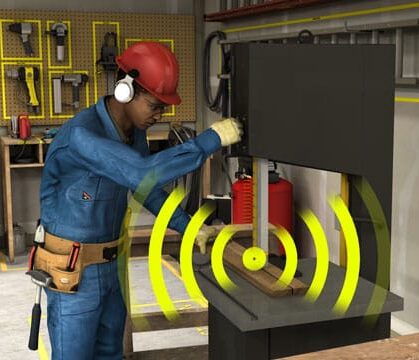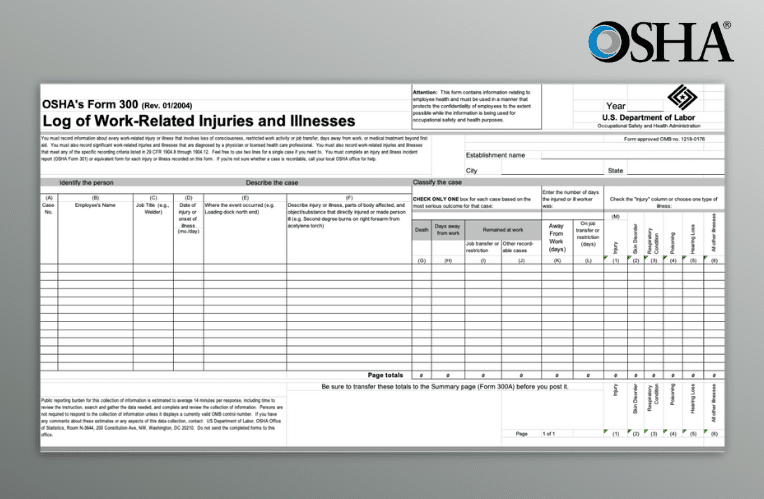November 22, 2024 15 min read

What Does OSHA Look for When Inspecting a Workplace?
Industry:
Solution:

When preparing for an OHSA inspection, you may ask yourself: What does OSHA look for when inspecting a workplace? In this comprehensive blog, we’ll guide you through the top ten things that inspectors are looking for during an OSHA inspection. This list will not only help your organization prepare for upcoming inspections, but also focus your hazard awareness and mitigation efforts.
Top 10 Hazards OSHA Inspectors Look for
Every OSHA inspection is unique, and there’s no guarantee what an OSHA inspector will be looking for.
However, this list of the top types of OSHA hazards will provide beneficial information to make your workplace safer and more productive. We’ll explore each of these focus areas in the following sections, providing answers to the overarching question of “What does OSHA look for when inspecting a workplace?”
OSHA-Authorized Training for 10-hour and 30-hours
Explore our OSHA approved training, including OSHA 10, OSHA 30 and HAZWOPER online courses.
Learn More
Hazard Type 1: Sources of Motion
OSHA inspectors will look for unguarded sources of motion. This may include:
- Rotating motion (circular motion)
- Reciprocating motion (back-and-forth motion)
- Transverse motion (movement in a straight, continuous line)
Common places to search for these hazards include around:
- Collars
- Couplings
- Cams
- Clutches
- Flywheels
- Shaft ends
- Nip points
- Spindles
- Meshing gears
- Horizontal/vertical shafting
These hazards are made more serious when there are projections such as set screws, bolts, nicks, abrasions, or projecting keys exposed on rotating parts. Watch out for these things in particular.
To avoid hazards relating to sources of motion during an OSHA inspection, keep your mobile equipment in good working order. Ensure that you implement these procedures:
- Proper maintenance
- Proper and appropriate operator training
- Teach pedestrians how to work safely around mobile equipment
Watch this OSHA Machine Guarding training preview to learn more about machine motion and action hazards and the importance of machine guarding.
Hazard Type 2: Sources of High Temperature
An OSHA inspection consists of searching for sources of high temperatures, which can burn workers or start fires in the workplace. While investigating sources of high temperature you should assess whether they seem normal, or whether they may result from a machine in disrepair or a poorly planned process.
Controls to consider include:
- Machine guarding
- Personal protective equipment (PPE)
- Limiting employee exposure to high temperatures to avoid heat stress and burns
- Ensuring that flammable materials, including combustible dusts, are not exposed to high temperatures
Hazard Type 3: Sharp Objects
Blades, edges, and other sharp objects can cause serious cutting injuries to workers. To safeguard against these hazards, you must ensure that:
- Blades and other sharp objects are properly guarded
Employees wear appropriate PPE, such as cut-resistant gloves
Employees know proper procedures when working with or near sharp objects
Remember to consider things like hand tools and table saws when searching for these hazardous shop objects.
Hazard Type 4: Rolling Objects (Crushing Hazards)
During an OSHA inspection, the inspector will likely look for rolling objects that can crush employees and/or body parts. This hazard includes both objects that are intended to roll and those that only roll when a control fails.
To properly address this hazard, you should implement:
- Redundant systems of protection
- Guarding, including secure barriers and pedestrian walkways
- Employee training on crushing hazards at the workplace
- Employee training on safety while working near crushing hazards
Hazard Type 5: Harmful Dusts
Several types of dust can create hazards in the workplace. Some dusts are respiratory hazards, such as friable asbestos dust or airborne crystalline silica dust. Other dusts are combustible hazards, as in combustible dust.
Controls for combatting harmful dusts include:
- Preventing dust creation
- Preventing dust accumulation
- Ventilation
- Use of respirators
- Keeping dusts from ignition sources
Hazard Type 6: Falling Objects
Falling objects pose significant risks to employees. Examples of this hazard in action include:
- Poorly designed and constructed scaffold
- Materials improperly placed on warehouse shelving units
- Hand tools dropped from an aerial work platform
- Heavy bags dropped through a floor opening to a level below
To control these hazards, implement the following techniques:
- Eliminate the chance that hazards can fall
- Use guarding and barriers
- Prohibit employees from working underneath something that could fall
- Use safety nettings and other similar protective devices
Hazard Type 7: Slippery Surfaces
Slips, trips, and falls are one of the more common causes of accidents in the workplace. In fact, 865 workers died from falls in 2022 and hundreds of thousands took time off work due to injuries.
To avoid getting dinged for slippery surfaces during an OSHA inspection, follow this checklist:
- Don’t allow surfaces to become slippery. This may involve re-engineering some of your current work processes, perhaps to redirect a slippery material that’s dripping onto a surface.
- Establish procedures for immediately removing slippery materials from walking surfaces. Consider closing doors and windows, putting non-slip materials on walking surfaces, putting mats on floors, providing workers with special, and high-traction footwear.
Hazard Type 8: Chemical Exposures
An OSHA inspection consists of searching for potential hazardous chemicals in the workplace. These chemicals could include:
- Nitrogen
- Benzene
- Lead
- Arsenic
- And more
To enhance your organization’s hazardous chemical safety, follow these steps:
- Identify the hazardous chemicals at your workplace
- Make sure these chemicals are used and stored properly
- Properly train workers about chemical hazards and how to work safely with them
- Ensure workers have proper PPE for working with chemicals
- Have safety data sheets (SDSs) on site
- Have emergency showers/eyewashes
- Have a defined emergency action plan for chemical spills and exposures
Hazard Type 9: Electrical Hazards
Electrical hazards are a common cause of workplace injuries and even fatalities.
To avoid negative aspects of OSHA scrutiny, ensure that:
- Your electrical wiring is done properly by qualified electricians
- Your company complies with OSHA’s general electrical requirements
- All wiring and machines are in proper working order
- When wiring and machines stop working, they’re immediately taken for repair
Remember to supply workers with proper training on:
Hazard Type 10: Layout of Workplace
The layout of your workplace can pose significant risks such as ergonomic hazards, or it may bring hazardous substances into close proximity with one another.
To avoid getting penalized for this hazard during an OSHA inspection, follow this checklist:
- Prioritize safety, efficiency, and accessibility. Clear pathways help prevent tripping or collision risks.
- Isolate hazardous materials. Designate specific areas to keep them safely separated.
- Organize workstations ergonomically. Provide proper seating, tools, and equipment to reduce strain injuries.
- Regularly review and adjust the layout. This helps address new or evolving risks.
- Train employees in workspace organization. Safe navigation improves overall workplace safety.
What To Do If You Identify a Hazard in the Workplace?
We’ve answered the question what does OSHA look for when inspecting a workplace? But after identifying these key hazards, what should you do next?
It’s essential to prioritize corrective actions to control any workplace hazards. Explore principles of risk management and safety and implement the hierarchy of controls in your organization to mitigate hazards and pass OSHA inspections.

How Vector Solutions Helps with OSHA Inspections
Knowing what an OSHA inspection consists of and how to control workplace hazards is essential to maintaining employee health, meeting regulations, and maintaining workplace safety.
At Vector Solutions, our comprehensive EHS software helps organizations safety hazards, conduct comprehensive risk assessments, and automate safety notifications and alerts. Take control of workplace hazards and OSHA inspections with this comprehensive software.
Request a demo and learn more.













